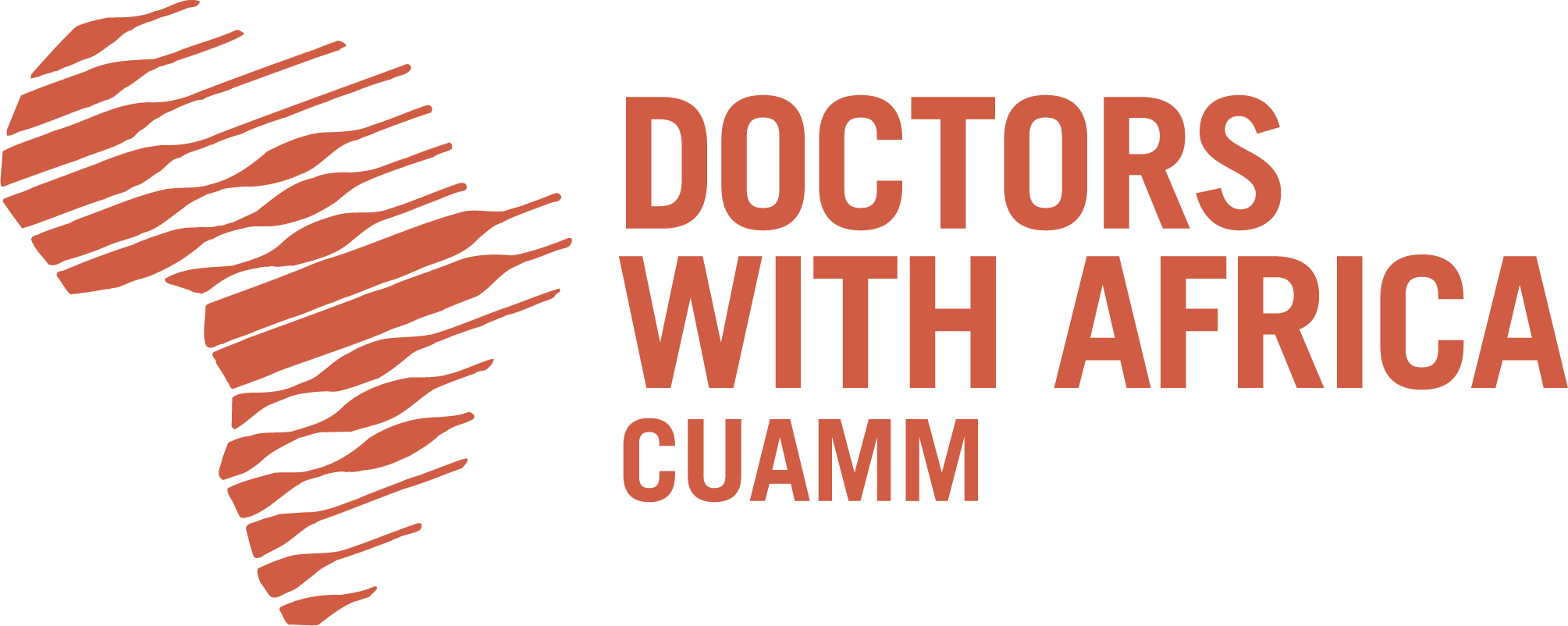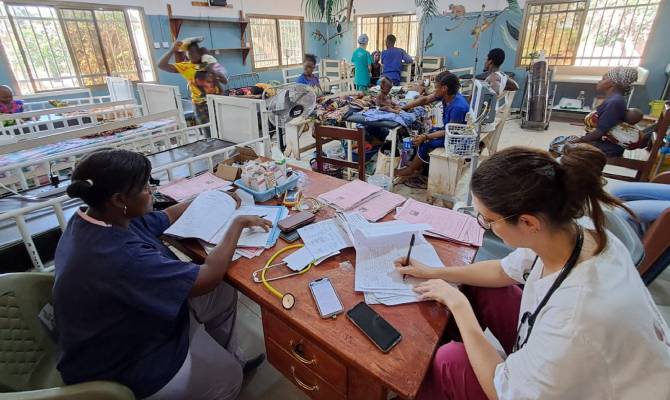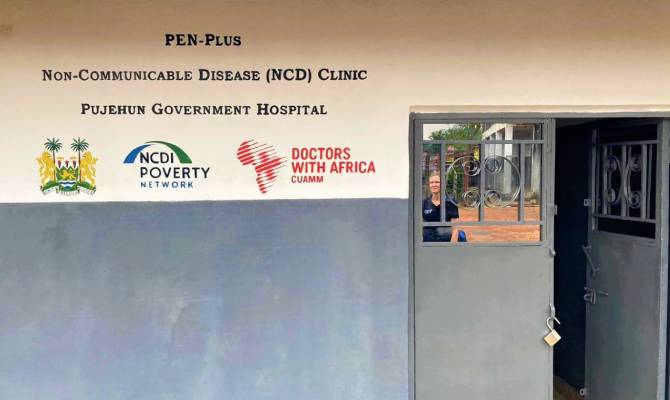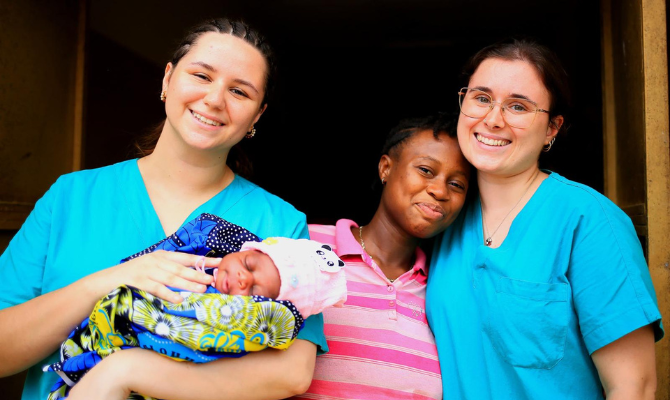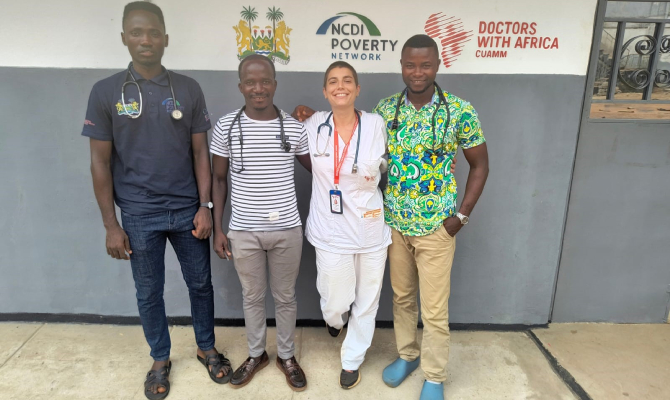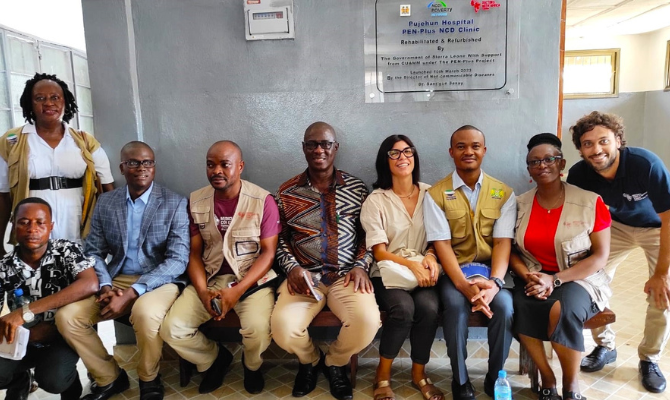A functional and beautiful place is also a place where better care can be provided. If that place happens to be the pediatric ward of a small hospital in Sierra Leone, where dozens of patients are admitted every day, then perhaps some paintings and a bit of color can make a hospitalization less frightening.
For the past eight months, the Pujheun hospital has been the place where Annachiara and Andrea spend most of their time. She is a CUAMM pediatrician, he is a volunteer physiotherapist. They arrive at the hospital early in the morning and leave when the daylight is over. This facility is a reference center for the area. Last year alone, 1,869 children were admitted to the pediatric ward which also includes a neonatal unit and a malnutrition unit.
Moving between the beds in the ward, Annachiara and Andrea witness the daily suffering of hospitalized children, the worry of their mothers, and the difficulty of the medical staff in working to the best of their ability in a context where resources are far from sufficient. Despite the high number of patients admitted, the hospital is constantly and overwhelmingly understaffed. Annachiara and Andrea, together with a nurse and a medical intern, are part of the CUAMM team that works alongside the local staff: just one medical technician and three nurses.
“We do what we can with what we have, but the staff is limited and the space is too. To manage to admit everyone to the ward, we were forced to place up to three children in a single bed. Apart from being impractical, this overcrowding was also dangerous for the patients themselves,” says Annachiara Zin, Cuamm pediatrician.
The Pujheun hospital hosts a large number of malnourished children. Most are under five years old and do not receive the proper intake of proteins, minerals, vitamins, and energy during their growth phase. Many arrive at the hospital in critical condition, either because of the distance from the facility or because the mothers do not recognize the warning signs.
“Malnutrition also leads to immunodeficiency,” explains Annachiara. “It means the immune system of these children is extremely weak, and any infection can cost them their lives. This is why it’s crucial to ensure proper care spaces.”
The need for better care spaces is what motivated the reorganization of the pediatric ward at Pujheun, a project led by CUAMM that Annachiara and Andrea, together with Maria—a volunteer nurse— contributed in making happen by working on it with patience and determination. They were supported by both CUAMM team on the field, many friends and family members and CUAMM donors who wanted to contribute to the project.
“We knew the pediatric ward’s conditions weren’t ideal even before we left, and in agreement with Cuamm, we had planned this reorganization,” explains Andrea Pasinato, physiotherapist. “After a few months in the ward, we understood what interventions were needed and started with the floor plans”.
Today, the ward is a different place. What was once a large overcrowded room is now a spacious area divided into two sections: one for emergencies and another for less severe admissions. There are enough beds, each with its own mosquito net, essential in a place with high malaria rates. The mothers have lockers to store the bags they bring to the hospital, unaware of how long they will be away from home. The plumbing has also been fixed to ensure running water in the ward. This new division allows the staff to provide the right care to each patient and move around more easily in a well-organized space. The walls also look different: the faded yellow has been replaced with colorful paintings depicting jellyfish, monkeys, and birds. A project commissioned to local artists, which isn’t just an aesthetic touch but a way to promote sensory stimulation for the malnourished young patients.
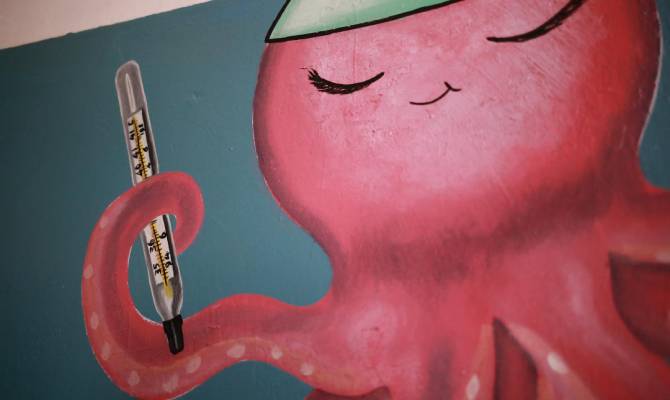
“In a few months, we will leave, but we like to think that the effort we put into reorganizing this ward will serve as both a new starting point for the doctors to come and as a gesture of care toward the young patients and their families,” says Annachiara Zin, Cuamm pediatrician.
